|
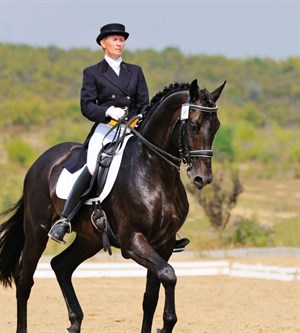
Choosing the right partner
© FEI
Words by Patricia Salem
For many adult amateur riders, the world of showing can seem at once enticing, mystifying, and downright frightening.
For those who are brand new to horse shows or who have never competed before but would like to, here’s some advice from equestrian professionals.
It’s never too late to step into the ring, but it helps to have knowledge, self-assurance, and a plan of attack to make the experience fun and worth doing again.
Below are 6 top tips to make sure you are ready to show for the first time...
Let's firstly look at common show problems...
When speaking with trainers, performance coaches and judges, many of the same problems and fears keep surfacing when it comes to adult amateurs who are show novices.
While tension about riding in close proximity to competitors can plague young riders too, it’s often adults who have less experience sharing space with other riders. Tweens and teens can be more likely to ride with their friends at the stables, and they’re more apt to enter shows together when they first start out.
Trainers are often better about taking young riders by the hand to show them the ropes, and youths can - generally speaking - have a biological advantage of being less fearful to begin with. It’s also a generational change in some riding disciplines.
“Years ago people tended to ride in groups and had confidence they could control their horses,” says Melonie Kessler, a Dressage trainer near Portland, Oregon, who is in demand throughout the USA as both a clinician and a judge.
“With the growth of Dressage in the US, students began to want the individual attention from their instructor, and so the horses were no longer in a group. Students were focusing on riding circles and learning contact, but the skill of managing their horses’ emotions in a crowd became a lost art.”
Kessler feels that the purpose of Dressage itself has become lost for some riders as well. Many riders aren’t well versed in the history of Dressage and how it was developed, and this is reflected in their tests, according to Kessler and her peers who recently met for a judges’ forum.
“The consensus from most judges is that riders are not aware of the purpose of the levels or the criteria of the movements,” she says.
“Riders need to be clear on exactly what judges are looking for and how the judges prioritise and penalise the problems that can arise in the test.”
Tools for success
So how do we solve these problems? Here are 6 top tips…
1. Enjoy camraderie
To address fear of the warm-up ring and to build camaraderie, working one’s horse in the arena in a group setting is ideal for calming both horse and rider.
Students whose trainers usually work one-on-one can request sessions with other riders or make a pointed effort to practice when the arena is open to anyone and most crowded.
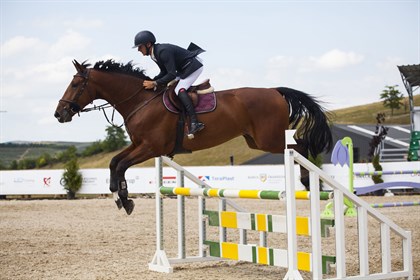
Senior show jumping
© FEI
2. Find a good instructor
Find an instructor who is experienced working with adult amateurs and who also has the time and understanding to go over the purpose behind each Dressage test level. In the Jumping world, this translates to a trainer who can explain how to memorise and interpret a course to anticipate challenges and prepare a strategy.
3. Ask questions
Regardless of the riding discipline, adult novices can attend clinics and schooling shows where they are given feedback on their performance and encouraged to ask questions that might be more difficult to pose in a more formal setting.
4. Be reflective
Debriefing after every show, no matter the level of experience, is vital too, suggests Jim Hickey, an Irish performance coach who specialises in Jumping and who has worked with riders of all levels, from novice competitors to Olympians and FEI World Equestrian Games™ medalists.
He recommends doing an analysis on performance as soon as possible after competing, while the ride is still fresh.
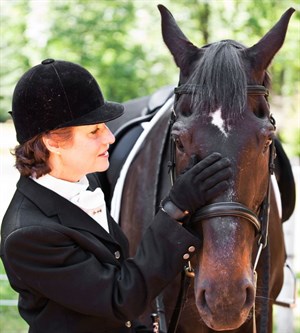
Be reflective
© FEI
Hickey tells the riders he works with to come up with at least five things they did right in competition, as well as skills that need improvement. “You’ve got to praise the heck out of yourself,” he says, “to keep your confidence high.”
He believes only about 20% of a rider’s success is due to ability, and the other 80% is owed to confidence and mental preparation.
5. Be prepared
Lack of adequate preparation is another common failure among new adult amateur competitors and can leave novices stressed before the show and disappointed afterward.
Jenny Susser, PhD, a sports psychologist who has worked with elite equestrians, including the USA Dressage Team for the 2012 London Olympics, says preparation is the No.1 strategy for any equestrian but doubly important for those new to showing.
Susser recommends making detailed lists prior to the show to free up mental bandwidth, which exists in a limited quantity, for one’s ride. Write down everything that needs to be packed in the horse box and what else needs to go along, from clothing to grooming tools.
Don’t forget to have a friend or trainer bring a bag or bucket ringside before the ride, with fly spray, a boot polishing cloth, a brush, and anything else that might be needed last minute. She also suggests Dressage riders not use a reader for their test but memorise it themselves, to eliminate tiny delays in mental processing that can result in confusion and loss of focus.
6. Choose the right partner
One of Dr. Susser’s most frustrating scenarios with amateur equestrians is the “overhorsed” rider, who doesn’t have the equitation skills to handle their mount but desires the prestige of an expensive, “hot” horse.
Trainers often enable this, she feels, due to financial fears and wanting to keep clients happy no matter what.
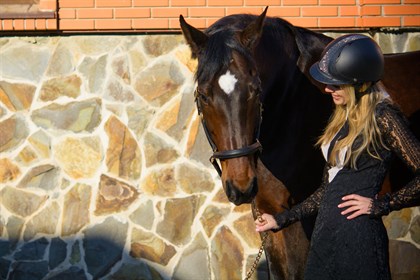
Choose the right partner
© FEI
Adult amateurs, particularly those who are new to competing, would be much better off being paired with an easy-going horse, even if it’s not as flashy, she advises.
Taking the fear out of riding a horse better suited for professionals is another way to liberate the brain by getting out of fight-or-flight mode, so new competitors can devote their energy to what drew them to show in the first place: enjoying their time in the saddle and highlighting their harmony with a trusted equine partner.
Source FEI
READ THE LATEST NEWS ARTICLES HERE
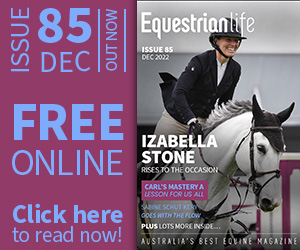
|

